|
Books Should Be Free Loyal Books Free Public Domain Audiobooks & eBook Downloads |
|
|
Books Should Be Free Loyal Books Free Public Domain Audiobooks & eBook Downloads |
|
Non-fiction |
|---|
|
Book type:
Sort by:
View by:
|
By: John Dewey (1859-1952) | |
|---|---|
 Democracy and Education: an introduction to the philosophy of education
Democracy and Education: an introduction to the philosophy of education
| |
 The Child and the Curriculum
The Child and the Curriculum
| |
 Moral Principles in Education
Moral Principles in Education
| |
 Democracy and Education: An Introduction to the Philosophy of Education
Democracy and Education: An Introduction to the Philosophy of Education
An important, controversial, and often cited work on public education. Dewey discusses the role of public education in a democracy and the different methods for achieving quality in education. After its initial publication, this book began a revolution in educational thinking; one that emphasized growth, experience, and activity as key elements in promoting democratic qualities in students and educators alike. (Introduction by timferreira) | |
 Human Nature And Conduct - Part 1, The Place of Habit in Conduct
Human Nature And Conduct - Part 1, The Place of Habit in Conduct
John Dewey, an early 20th Century American philosopher, psychologist, educational theorist saw Social Psychology as much a physical science as Biology and Chemistry. This project encompasses Part 1 of 4 of his book Human Nature and Conduct. Dewey's uses the word "HABIT" as a specialized catch-all word to describe how a person and his/her objective environment interact. This interaction is the basis for moral judgement. Dewey writes: "All habits are demands for certain kinds of activity; and they constitute the self.” In other places he also asserts that "Habits are Will." - Summary by William Jones, Soloist | |
By: John Donne (1572-1631) | |
|---|---|
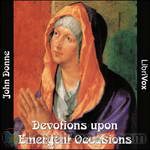 Devotions upon Emergent Occasions
Devotions upon Emergent Occasions
Devotions upon Emergent Occasions is a 1624 prose work by the English writer John Donne. It is a series of reflections that were written as Donne recovered from a serious illness, believed to be either typhus or relapsing fever. (Donne does not clearly identify the disease in his text.) The work consists of twenty-three parts describing each stage of the sickness. Each part is further divided into a Meditation, an Expostulation, and a Prayer. The seventeenth meditation is perhaps the best-known part of the work... | |
By: John E. (John Edwards) Russell (1834-1903) | |
|---|---|
 Rational Horse-Shoeing
Rational Horse-Shoeing
| |
By: John Evelyn (1620-1706) | |
|---|---|
 Sylva, Vol. 1 (of 2) Or A Discourse of Forest Trees
Sylva, Vol. 1 (of 2) Or A Discourse of Forest Trees
| |
 Acetaria: A Discourse of Sallets
Acetaria: A Discourse of Sallets
| |
By: John F. (John Fairfield) Dryden (1839-1911) | |
|---|---|
 The American Type of Isthmian Canal Speech by Hon. John Fairfield Dryden in the Senate of the United States, June 14, 1906
The American Type of Isthmian Canal Speech by Hon. John Fairfield Dryden in the Senate of the United States, June 14, 1906
| |
By: John Farrar (1896-1974) | |
|---|---|
 Bookman, March 1921
Bookman, March 1921
This precursor to The New Yorker magazine features several Algonquin Roundtable regulars, including Broun, Woolcott, and Morley. Editor is John C. Farrar, an American editor, writer and publisher. Farrar founded two publishing companies — Farrar & Rinehart and Farrar, Straus and Giroux. | |
By: John Fiske (1842-1901) | |
|---|---|
 The Unseen World and Other Essays
The Unseen World and Other Essays
| |
By: John Flavel (1627-1691) | |
|---|---|
 Divine Conduct, or the Mystery of Providence
Divine Conduct, or the Mystery of Providence
Shows God's providence in every aspect of our lives. - Summary by RuthP | |
By: John Foxe | |
|---|---|
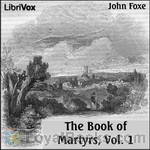 Foxe's Book of Martyrs, A History of the Lives
Foxe's Book of Martyrs, A History of the Lives
The Book of Martyrs, by John Foxe, is an English Protestant account of the persecutions of Protestants, many of whom had died for their beliefs within the decade immediately preceding its first publication. It was first published by John Day, in 1563. Lavishly illustrated with many woodcuts, it was the largest publishing project undertaken in Britain up to that time. Commonly known as, “Foxe’s Book of Martyrs”, the work’s full title begins with “Actes and Monuments of these Latter and Perillous Days, Touching Matters of the Church... | |
By: John Franklin Bobbitt | |
|---|---|
 What the Schools Teach and Might Teach
What the Schools Teach and Might Teach
| |
By: John Frederick Bligh Livesay (1875-1944) | |
|---|---|
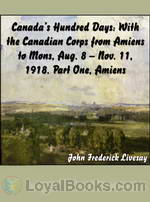 Canada's Hundred Days: With the Canadian Corps from Amiens to Mons 1918
Canada's Hundred Days: With the Canadian Corps from Amiens to Mons 1918
This is the incredible story of the actions of the men and women of the Canadian Expeditionary Force, Canada’s contribution to the Great War 1914-1919, during the last 100 days of the First World War. After nearly 4 years of stalemate (trench warfare) the Allied Forces planned to break through the German Hindenburg Line and then push the enemy from their defensive positions. You will follow the CEF as they take Amiens (Part One), Arras (Part Two), Cambrai (Part Three) and then the pursuit of the German Forces from Valenciennes to Mons (Part Four) in Belgium, the same place where the war began on August 4, 1914, on November 11, 1918. | |
By: John Galsworthy (1867-1933) | |
|---|---|
 John Galsworthy Works
John Galsworthy Works
| |
By: John George Nicolay | |
|---|---|
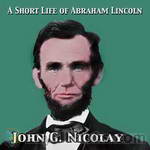 A Short Life of Abraham Lincoln
A Short Life of Abraham Lincoln
John G. Nicolay was Abraham Lincoln’s private White House secretary. With assistant secretary, John Hay, he wrote the two volume definitive biography of Lincoln, “Abraham Lincoln, a Biography.” Although this is a condensation by Nicolay of that biography, it is still a sizable work and a fairly thorough treatment of the life of the 16th president of the United States. | |
By: John Graham Gillam | |
|---|---|
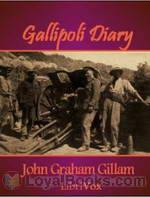 Gallipoli Diary
Gallipoli Diary
World War I was one of the most savage and brutal wars in human history. There were millions of deaths and the tragedy was compounded by the fact that these were all young men in the flower of youth. Both sides suffered heavy losses and this war is also notable for being one in which many new and terrible weapons were introduced by both to slaughter each other. Gallipoli Diary by John Graham Gillam is one of the many personal narratives written by survivors of this bloody conflict. Published in 1918, when memories of the war were still fresh in the minds of those who had experienced it, it is indeed a slice of history for modern-day readers who encounter it nearly a hundred years later. | |
By: John Gregory Bourke (1846-1896) | |
|---|---|
 Medicine-Men Of The Apache
Medicine-Men Of The Apache
“Herewith I have the honor to submit a paper upon the paraphernalia of the medicine-men of the Apache and other tribes. Analogues have been pointed out, wherever possible, especially in the case of the hoddentin and the izze-kloth, which have never to my knowledge previously received treatment.” . Bourke was a Medal of Honor awardee in the American Civil War whose subsequent Army career included several campaigns in the Indian wars of the mid to late 19th century in the American West. He wrote prolifically... | |
By: John H. (John Henry) Worst (1850-1945) | |
|---|---|
 The Stewardship of the Soil Baccalaureate Address
The Stewardship of the Soil Baccalaureate Address
| |
 A Broader Mission for Liberal Education Baccalaureate Address, Delivered in Agricultural College Chapel, Sunday June 9, 1901
A Broader Mission for Liberal Education Baccalaureate Address, Delivered in Agricultural College Chapel, Sunday June 9, 1901
| |
By: John H. Haaren (1855-1916) | |
|---|---|
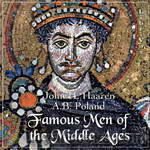 Famous Men of the Middle Ages
Famous Men of the Middle Ages
“THE study of history, like the study of a landscape, should begin with the most conspicuous features. Not until these have been fixed in memory will the lesser features fall into their appropriate places and assume their right proportions. The famous men of ancient and modern times are the mountain peaks of history. It is logical then that the study of history should begin with the biographies of these men. Not only is it logical; it is also pedagogical. Experience has proven that in order to attract and hold the child’s attention each conspicuous feature of history presented to him should have an individual for its center... | |
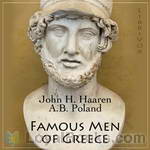 Famous Men of Greece
Famous Men of Greece
Famous Men of Greece is a series of biographical sketches written for the purpose of making the study of history lively and interesting by giving insight into the men who lived during this time. | |
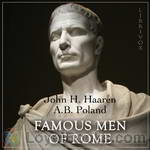 Famous Men of Rome
Famous Men of Rome
Famous Men of Rome is a series of biographical sketches written for the purpose of making the study of history lively and interesting by giving insight into the men who lived during this time. | |
By: John H. Haaren and A.B. Poland | |
|---|---|
 Famous Men of Modern Times
Famous Men of Modern Times
Famous Men of Modern Times is a series of biographical sketches written for the purpose of making the study of history lively and interesting by giving insight into the men who lived during this time. Summary by Laura Caldwell | |
By: John Henry Ingram (1842-1916) | |
|---|---|
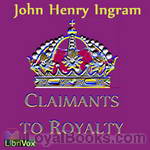 Claimants to Royalty
Claimants to Royalty
A compilation of chronicles of the numerous impostors and impostures of kings, queens, and rulers. | |
By: John Henry Newman (1801-1890) | |
|---|---|
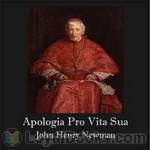 Apologia Pro Vita Sua
Apologia Pro Vita Sua
A religious autobiography of unsurpassed interest, the simple confidential tone of which "revolutionized the popular estimate of its author," establishing the strength and sincerity of the convictions which had led him into the Roman Catholic Church (Wikipedia). "No autobiography in the English language has been more read; to the nineteenth century it bears a relation not less characteristic than Boswell's 'Johnson' to the eighteenth." Rev. Wm. Barry, D.D. | |
By: John Henry Patterson (1867-1947) | |
|---|---|
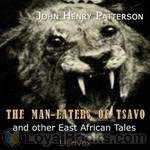 The Man-Eaters of Tsavo and Other East African Adventures
The Man-Eaters of Tsavo and Other East African Adventures
In 1898, during the construction of river-crossing bridge for the Uganda Railway at the Tsavo River, as many as 135 railway workers were attacked at night, dragged into the wilderness, and devoured by two male lions. The Man-Eaters of Tsavo is the autobiographical account of Royal Engineer Lt. Col. J.H. Patterson's African adventures. Among them, his hunt for the two man-eaters.This book was the basis for the 1996 film The Ghost and the Darkness. | |
By: John Howell (1788-1863) | |
|---|---|
 The Life and Adventures of Alexander Selkirk
The Life and Adventures of Alexander Selkirk
This work was the true story of Alexander Selkirk (1676 to December 13, 1721), a Scottish sailor who was employed in a number of different trades during his early life. As a young man, Selkirk learned the skills of tanning and shoemaking, and later became a buccaneer (a government-sanctioned pirate) on the Cinque Ports, working his way up to the position of ship's sailing master or navigator. But in the case of Selkirk, his experiences would eventually help him to survive his isolation on a deserted island in the Juan Fernández archipelago, off the coast of Chile, where he spent 52 months before being rescued... | |
By: John Huntley Skrine (1848-1923) | |
|---|---|
 Uppingham by the Sea a Narrative of the Year at Borth
Uppingham by the Sea a Narrative of the Year at Borth
| |
By: John Kendrick Bangs (1862-1922) | |
|---|---|
 Peeps at People - Being Certain Papers from the Writings of Anne Warrington Witherup
Peeps at People - Being Certain Papers from the Writings of Anne Warrington Witherup
Written by a fictitious first-person narrator, this book puts a humorous spin on encounters with several famous people of the time. "I set forth from my office in London upon my pilgrimage to the shrines of the world's illustrious. Readers everywhere are interested in the home life of men who have made themselves factors in art, science, letters, and history, and to these people I was commissioned to go." -- Summary by TriciaG and from the book. | |
By: John L. Cotter (1911-1999) | |
|---|---|
 New Discoveries at Jamestown
New Discoveries at Jamestown
Chances are, you are reading this because you are aware that Jamestown, Virginia, celebrated its 400th birthday in 2007. It was the first “successful” English settlement in America. Although the colonists eventually moved upriver to be quit of the hard luck and difficult conditions on the small island, they left behind a trove of possessions – used, worn out, or forgotten. Did you ever stop to consider just how many different items you have, need, or use, to live, work, and amuse yourself? Chances are that you would seriously underestimate! But once you put such a list together, another person could tell quite a story about the life you lead... | |
By: John L. Ransom (1843-1919) | |
|---|---|
 Andersonville Diary, Escape And List Of The Dead
Andersonville Diary, Escape And List Of The Dead
John L. Ransom was the quartermaster of Company A, 9th Michigan Volunteer Cavalry during the American Civil War and a Union prisoner in the infamous Confederate prison at Andersonville, Georgia. This is his diary which he published some few years after the end of the Civil War. Note that in pages 193 through 301 are included 1) List of the Dead and 2) Recapitulation of Deaths By States; both of these sections are omitted from this Librivox reading. The Andersonville National Historic Site, located near Andersonville, Georgia, preserves the former Camp Sumter (also known as Andersonville Prison), a Confederate prisoner-of-war camp during the American Civil War…... | |
By: John Lancaster Spalding (1840-1916) | |
|---|---|
 Education and the Higher Life
Education and the Higher Life
| |
By: John Latimer (1824-1904) | |
|---|---|
 Sixteenth-century Bristol
Sixteenth-century Bristol
Plague, piracy and payments to members of Parliament! The town of Bristol, England in the Sixteenth Century was a fascinating place, and John Latimer's book is a comprehensive guide to this period, describing royal visits from both Henry VIII and Elizabeth I, as well as detailing contemporary pastimes such as wrestling competitions, bear-baiting and traveling players. He explains the sanitary arrangements, dreadful postal service and the difficulty of moving from the status of town to "City" among many other interesting topics.It is made up of papers originally published in the Bristol Mercury in 1902-3 and is read by Bristolian, Elaine Webb.Summary by Cori Samuel and Elaine Webb | |
By: John Leland (1503-1552) | |
|---|---|
 The Itinerary of John Leland in or About the Years 1535-1543, Part IX
The Itinerary of John Leland in or About the Years 1535-1543, Part IX
John Leland's 'Itinerary' was the product of several journeys around England and Wales undertaken between 1538 and 1543. The manuscript is made up of Leland's notebooks, which were first published in the 18th century, and later in a ten-part, five-volume edition published by Lucy Toulmin (1906-10). Part IX of the manuscript begins in the south of England and gradually meanders its way, county by county, through central and northern England up to the borders of Scotland. Leland did not prepare the manuscript for publication and it is sometimes difficult to follow, with occasional geographically-misplaced sections, lists of headings with content yet to be added, and the odd lapse into Latin... | |
By: John Lloyd Stephens (1805-1852) | |
|---|---|
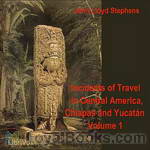 Incidents of Travel in Central America, Chiapas, and Yucatan, Vol. 1
Incidents of Travel in Central America, Chiapas, and Yucatan, Vol. 1
The year is 1838. The scene is the dense Honduran forest along the Copán River. Two men, John Lloyd Stephens and Frederick Catherwood, are about to rediscover Mayan civilization. Their guide, slashing through the rampant growth with his machete, leads them to a structure with steps up the side, shaped like a pyramid. Next they see a stone column, fourteen feet high, sculptured on the front with a portrait of a man, “solemn, stern and well fitted to excite terror,” covered on the sides with hieroglyphics, and with workmanship “equal to the finest monuments of the Egyptians... | |
 Incidents of Travel in Central America, Chiapas, and Yucatán, Vol. 2
Incidents of Travel in Central America, Chiapas, and Yucatán, Vol. 2
The year is 1838. The scene is the dense Honduran forest along the Copán River. Two men, John Lloyd Stephens and Frederick Catherwood, are about to rediscover Mayan civilization. Their guide, slashing through the rampant growth with his machete, leads them to a stone column, fourteen feet high, sculptured on the front with a portrait of a man, “solemn, stern and well fitted to excite terror,” covered on the sides with hieroglyphics, and with workmanship “equal to the finest monuments of the Egyptians... | |
By: John Locke (1632-1704) | |
|---|---|
 Two Treatises of Civil Government
Two Treatises of Civil Government
The Two Treatises of Civil Government is a work of political philosophy published anonymously in 1689 by John Locke. The First Treatise is an extended attack on Sir Robert Filmer’s Patriarcha, which argued for a divinely-ordained, hereditary, absolute monarchy. The more influential Second Treatise outlines a theory of civil society based on natural rights and contract theory. Locke begins by describing the “state of nature,” and goes on to explain the hypothetical rise of property and civilization, asserting that the only legitimate governments are those which have the consent of the people... | |
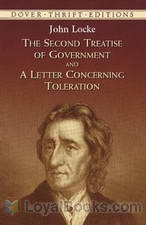 A Letter Concerning Toleration
A Letter Concerning Toleration
Letter Concerning Toleration by John Locke was originally published in 1689. Its initial publication was in Latin, though it was immediately translated into other languages. In this “letter” addressed to an anonymous “Honored Sir” (actually Locke’s close friend Philip von Limborch, who published it without Locke’s knowledge) Locke argues for a new understanding of the relationship between religion and government. One of the founders of Empiricism, Locke develops a philosophy that is contrary to the one expressed by Thomas Hobbes in Leviathan, primarily because it supports toleration for various Christian denominations... | |
By: John M. (John Moseley) Weeks (1788-1858) | |
|---|---|
 A Manual or an Easy Method of Managing Bees
A Manual or an Easy Method of Managing Bees
| |
By: John M. Douglass | |
|---|---|
 Indians in Wisconsin's History
Indians in Wisconsin's History
Pre-European arrival history of Wisconsin's Native American tribes, with discussions of their way of life, crafts, clothing, shelter, hunting, fishing and farming. Their activity and battles during French, British and U.S. rule of the territory. Extermination and forced removal of tribes to agencies and reservations. Numbers of survivors from original tribes and plight of those remaining in the 20th century. Popular Science Handbook No. 6, published by the Milwaukee Public Museum in 1954. Summary by Verla Viera | |
By: John Mackenzie Bacon (1846-1904) | |
|---|---|
 The Dominion of the Air; the story of aerial navigation
The Dominion of the Air; the story of aerial navigation
| |
By: John Mark | |
|---|---|
 Jesus of Nazareth, A Biography
Jesus of Nazareth, A Biography
"Jesus of Nazareth, a Biography, by John Mark," recognizes the author of the second Gospel as that "John, whose surname was Mark" (Acts 15:37), whom Barnabas chose as companion when he sailed for Cyprus on his second missionary journey. In making use of the new title, the plan of the Editor is to present "The Gospel: According to Mark" as it would be printed were it written in the twentieth rather than the first century. (Introduction from Forward, by D. Appleton & Co, Publishers, 1922) | |
By: John Marshall (1755-1835) | |
|---|---|
 Opinion of the Supreme Court of the United States, at January Term, 1832
Opinion of the Supreme Court of the United States, at January Term, 1832
| |
By: John Marshall Barker (1849-1928) | |
|---|---|
 Colleges in America
Colleges in America
| |
By: John McTaggart (1866-1925) | |
|---|---|
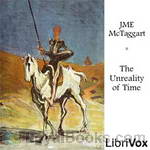 The Unreality of Time
The Unreality of Time
John McTaggart (1866-1925) was a British metaphysician and philosophical idealist. In this famous article for the periodical Mind, he introduced the notion of the A, B and C series, which was to become a leading theory in explaining the nature of time. | |
By: John Mills (1880-) | |
|---|---|
 Letters of a Radio-Engineer to His Son
Letters of a Radio-Engineer to His Son
| |
By: John Milton (1608-1674) | |
|---|---|
 Areopagitica
Areopagitica
A prose tract or polemic by John Milton, published November 23, 1644, at the height of the English Civil War… Milton, though a supporter of the Parliament, argued forcefully against the Licensing Order of 1643, noting that such censorship had never been a part of classical Greek and Roman society. The tract is full of biblical and classical references which Milton uses to strengthen his argument. The issue was personal for Milton as he had suffered censorship himself in his efforts to publish... | |
 Paradise Regain'd (version 2)
Paradise Regain'd (version 2)
Having been publicly acknowledged as God's "beloved Son," Jesus retires to the desert to meditate upon what it means to be the Messiah, about whose coming many conflicting opinions have been circulating among the Jews. Although a learned rabbi, Jesus possesses no knowledge beyond what is available to all human beings. Satan also takes a new interest in this favored "son of God" and seeks to learn what threat he constitutes. The poem consists of a debate between these two adversaries, each seeking the same understanding of precisely what mankind's Savior will do in a world where the way to success typically lies through "wealth ... | |
By: John Muir (1838-1914) | |
|---|---|
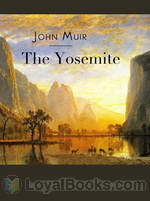 The Yosemite
The Yosemite
Anyone who's ever visited the Yosemite National Park will find this book a treasure trove of descriptions, information and evocations of the fabled beauty of this amazing piece of heaven on earth! The Yosemite by John Muir was published in 1912. Born in Scotland, England, this world-famous conservationist was a multi-talented genius. He was a geologist, naturalist, engineer, writer, botanist and a passionate and prolific writer on the preservation of the natural environment. His family migrated to America when he was just a few years old, the third of eight boisterous children... | |
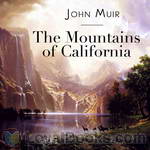 The Mountains of California
The Mountains of California
First published in 1894, this wonderful travelogue by a famed naturalist and conservationist still remains a book that delights and informs its readers. The Mountains of California by John Muir recounts the author's exploration of the Yosemite Valley, Mount Whitney, the famed sequoia forests and King's Canyon among other places of immense natural beauty. Written in his characteristic zestful style, with a deep understanding and respect for nature, the book is a treasure trove of geography, geology, botany, biology and sheer love of the magical planet we live in... | |
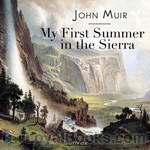 My First Summer in the Sierra
My First Summer in the Sierra
The journal of nature-lover John Muir who spent the summer of 1869 walking California’s Sierra Nevada range. From French Bar to Mono Lake and the Yosemite Valley, Muir was awestruck by everything he saw. The antics of the smallest “insect people” amazed him as much as stunted thousand-year old Juniper trees growing with inconceivable tenacity from tiny cracks in the stone. Muir spent the rest of his life working to preserve the high Sierra, believing that “the clearest way into the Universe is through a forest wilderness.” John Muir (1838-1914) was born in Dunbar, Scotland and grew up in Wisconsin, USA. This recording commemorates the 140th anniversary of that first summer. | |
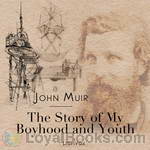 The Story of My Boyhood and Youth
The Story of My Boyhood and Youth
“The only fire for the whole house was the kitchen stove, with a fire box about eighteen inches long and eight inches wide and deep,- scant space for three or four small sticks, around which in hard zero weather all the family of ten shivered, and beneath which in the morning we found our socks and coarse, soggy boots frozen solid.” Thus, with perceptive eye for detail, the American naturalist, John Muir, describes life on a pioneer Wisconsin farm in the 1850’s. Muir was only eleven years old when his father uprooted the family from a relatively comfortable life in Dunbar, Scotland, to settle in the backwoods of North America... | |
 Travels in Alaska
Travels in Alaska
In 1879 John Muir went to Alaska for the first time. Its stupendous living glaciers aroused his unbounded interest, for they enabled him to verify his theories of glacial action. Again and again he returned to this continental laboratory of landscapes. The greatest of the tide-water glaciers appropriately commemorates his name. Upon this book of Alaska travels, all but finished before his unforeseen departure, John Muir expended the last months of his life. | |
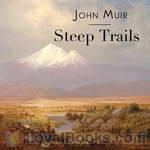 Steep Trails
Steep Trails
A collection of Muir's previously unpublished essays, released shortly after his death. "This volume will meet, in every way, the high expectations of Muir's readers. The recital of his experiences during a stormy night on the summit of Mount Shasta will take rank among the most thrilling of his records of adventure. His observations on the dead towns of Nevada, and on the Indians gathering their harvest of pine nuts, recall a phase of Western life that has left few traces in American literature... | |
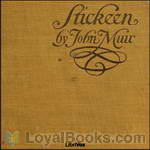 Stickeen
Stickeen
A great dog story, a well told tale — the naturalist and adventurer John Muir recounts how he and his companion, a dog named Stickeen, each, alone, confronted and conquered their fears of an icy Alaskan glacier in 1880. | |